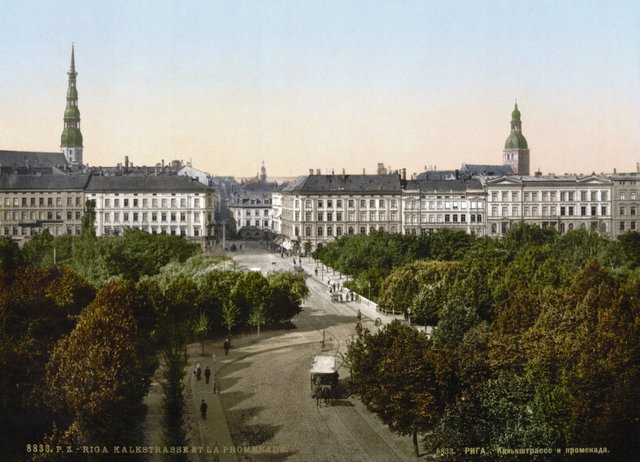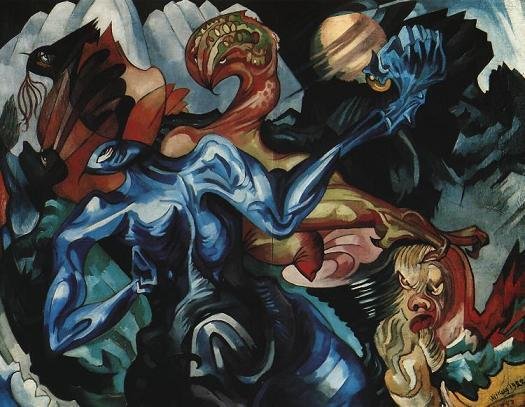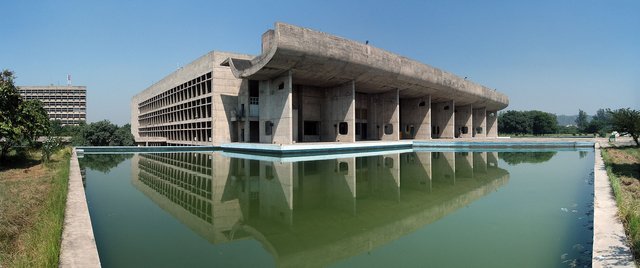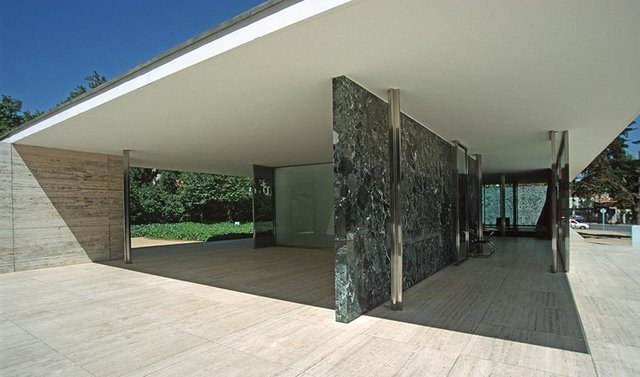[This and that] #2 Favorite decade
I decided to choose the criterium of myself being Polish to select my favorite decade of the 20th century. It made the task much easier for me: two world wars, martial law, communism... I was basically left with the 1900s, 1920s, and 1990s. I'm a 90s child by birth, but not a big fan of the decade, especially its aesthetics. Spice Girls, Beverly Hills 90210, thin eyebrows, two ponytails and flashy colors, Kelly Bundy and colorful butterfly hair clips make me shiver a little.
1900s - a period of great socioeconomic development both in Poland and in Latvia. To be honest, Latvia was my first thought when I was considering the 1900s, because of its art nouveau. Fact: it was the best decade in the history of Riga, which, despite being part of the Russian Empire, had very advanced industry and was a major port city - a strong connector between Europe and Russia.

Postcard from Riga, 1900s. Note the bilingual inscription stating the address.
Source: Library of Congress, Prints & Photographs Division, Photochrom Collection, LC-DIG-ppmsc-03871 (digital file from original), public domain.
The 1900s marked the beginning of the notion of art nouveau architecture in Riga, which has the largest number of buildings from this period in Europe (over 1000). The style was strongly connected with national romantism which was prominent in architecture, fine art and literature. I admire it a lot as it was a proof of Riga being in full bloom, but unfortunately I don't like it that much, having worked on a retrofit project of a marvelous art nouveau tenement house in the center of Riga. But this is a story for another time...
The 20s however are a good time for Poland after the Polish victory in 1920 over Red Army in the Battle of Warsaw, which stopped communism from spreading further to Western Europe. It was a big milestone in the history of Poland and Europe (wiki if you wanna read more). Also, to honor Latvia, I would like to mention that it became an independent country for the first time in history in 1920 and continued to be free until the 2nd World War.
Women in the 20s
Greta Garbo singing "I'm your man". I love this song sung by Boguslaw Linda... but he's not from the 20s!
The times of the soft voice and sharp features of Greta Garbo and Marlene Dietrich, beginning of Simone de Beauvoir's philosophical thought, the 19th amendment (1920) allowing women to vote in the US, and developing generation of women that were so strong they were equal supporters of their men during the upcoming war in many countries in the world - it was a big decade for women, which is a big inspiration to me.
In Poland, women were allowed to vote after regaining independence after the 1st World War in 1918 and the emancipation strengthened throughout the 20s.
Culture and technology in full bloom
 Witkacy is a great example of a Polish painter, writer, philosopher and playwright whose creative force flourished in the 20s, often under the influence of various narcotic substances.
Witkacy is a great example of a Polish painter, writer, philosopher and playwright whose creative force flourished in the 20s, often under the influence of various narcotic substances. Interwar literature
Believe it or not, but this is my favorite period in the history of poetry and architecture (except for the contemporary times), especially in Poland - but not only. In Russian literature formalism and structuralism catches on, after de Saussure's Course in General Linguistics gets published, which brings about a multitude of exciting studies in literature and linguistics. I think you can already tell I'm a bit of a structuralist by heart and I'm guilty of the belief that the form and, especially, the structure of a poem is an integral part of it, which strongly impacts the content and skilful design of a structure gives evidence of a poet's background in the field of the art they perform.
In my early teens I was fascinated by Julian Przyboś, Stanisław Młodożeniec, Tadeusz Peiper... Interestingly, I never liked Maria Pawlikowska-Jasnorzewska, but she popped up in my head today, before I selected the period for the post, and I think I finally got her.

Source: The Polish Review, vol. XXXVII, No. 1, 1992:41-44, 1992 The Polish Institute of Arts and Sciences
Last but not least... architecture
Let's be honest - if I wanted to list all notable events and people in the field of architecture of the 20s in the world I would have to write a book - or a couple of them. So just to lightly touch the subject:

Although I definitely do not love Le Corbusier (Polish readers: see this great post on him by @grzechotnik), I am kind of grateful to him for balancing out the neoclassical movement in architecture. Photo: Palace of Assembly in Chandigarh, India. Source: duncid.

An amazing example of Bauhaus heritage is Mies van der Rohe's Barcelona Pavilion. Source: Hans Peter Schaefer.
Thanks for reading and thanks to @hrissm for tagging me. I'm really enjoying the challenge so far. Now a couple of words about it:
The Rules
Choose one of the themes each day and explain us why it's your favorite. Post a picture of it. Do this for 7 days in a row if you accept the challenge. Nominate up to three people each day. Tag it with #favouritethisandthat and include the themes that one can pick from.
The Themes You Can Choose From
Decade - Game - Movie Character - TV Series - Website - Public Figure - Monument
My favourite decade as well :) Besides, #favouritethisandthat is a great challenge. It takes some creativity and effort to write a good post about any given theme, but so far you're nailing it!
Thank you! Feel free to take up the challenge as well! :) I like how it forces me to look into the topic and explore more about it.
Maybe I will :)
I like Mies.
Why haven’t you told me to read this: “The Street of Crocodiles" by Bruno Schulz?
Good choice. Nice write up.
Me too. There is so much I would recommend you to read that it just never crossed my mind. This is just one of the top books of the 20s while there's so much more fantastic reads. It is however quite unique in the history of literature... If you happen upon it definitely give it a try. Thanks!
Hello @katayah, thank you for sharing this creative work! We just stopped by to say that you've been upvoted by the @creativecrypto magazine. The Creative Crypto is all about art on the blockchain and learning from creatives like you. Looking forward to crossing paths again soon. Steem on!
Świetny artykuł! Bardzo dobrze się czyta to co i jak piszesz.
Gratuluję:)